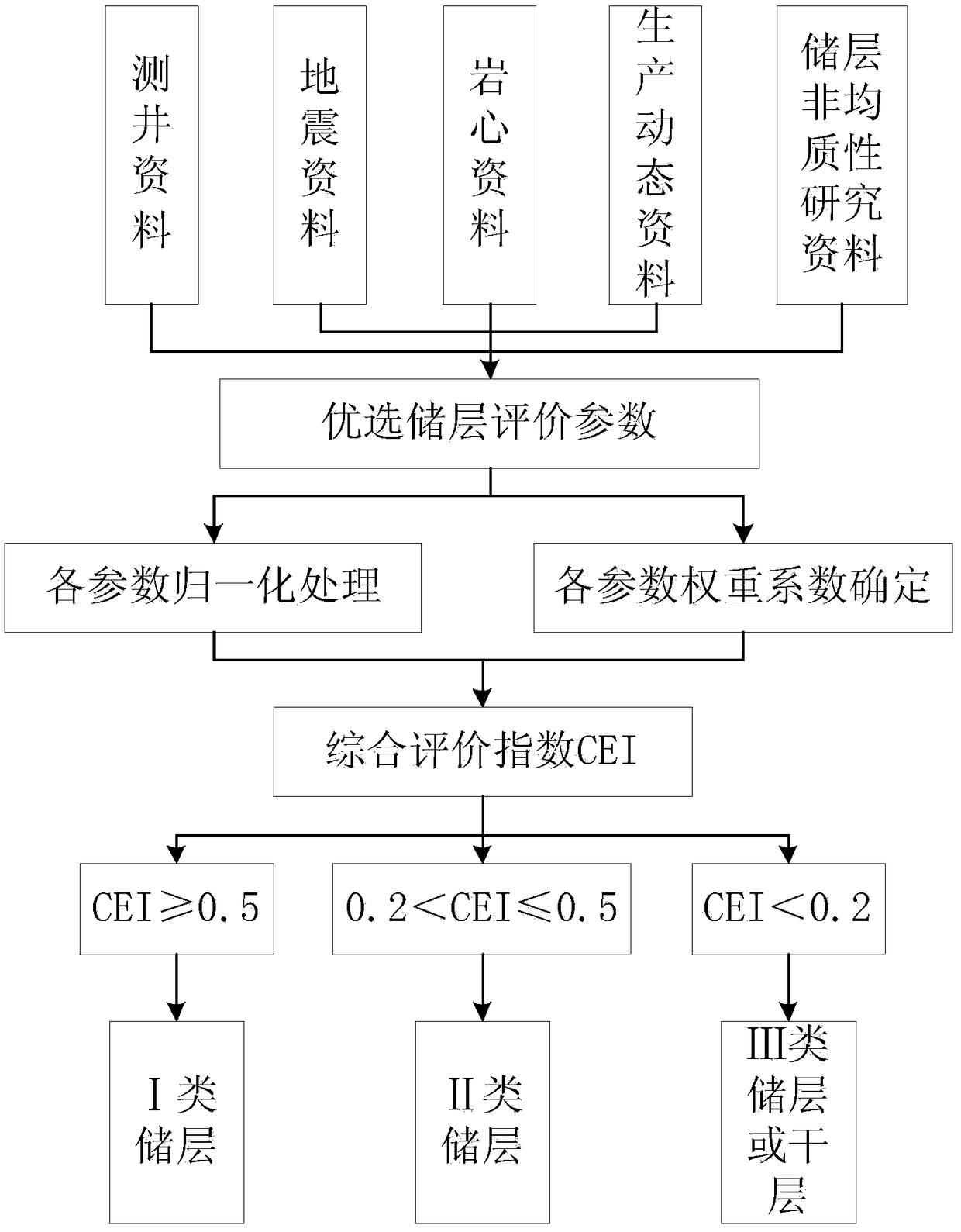Reservoir evaluation method for heterogeneous interbedded sand bodies
An evaluation method and heterogeneous technology, applied in earthwork drilling, data processing applications, wellbore/well components, etc., can solve problems such as quantitative evaluation, difficult heterogeneous interbedded sand body reservoirs, etc., and achieve full integration , The calculation process is simple and convenient, and the effect of reducing misjudgment
- Summary
- Abstract
- Description
- Claims
- Application Information
AI Technical Summary
Problems solved by technology
Method used
Image
Examples
Embodiment 1
[0026] Such as figure 1 The shown reservoir evaluation method for heterogeneous interbedded sand bodies includes the following steps: (a) combining logging data, seismic data, core data, production performance data, and reservoir heterogeneity research data to conduct Reservoir evaluation parameters are optimized, and the preferred reservoir evaluation parameters are N types of the following parameters: lithology, rock structure, diagenesis, cementation type, support mode, sedimentary microfacies, effective reservoir thickness, porosity, permeability , intralayer permeability variation coefficient, penetration coefficient, grade difference, and average pore throat radius, where N≥3; (b) In all sublayers, use the extreme value method to normalize each selected reservoir evaluation parameter Processing, so that its value is between 0 and 1, and the normalized value is recorded as S i ; Determine the weight coefficient W of each parameter in different sublayers according to the ...
Embodiment 2
[0028] Such as figure 1 The shown reservoir evaluation method for heterogeneous interbedded sand bodies, on the basis of Example 1, also includes step (d): using a three-dimensional geological model to digitize the classification and evaluation results of each sub-layer reservoir Describe and obtain the spatial distribution of each small layer. The preferred reservoir evaluation parameters in step (a) are reservoir effective thickness, porosity, permeability, and intralayer permeability difference. Normalized value S i =P i / P max , where P i is the actual value of the reservoir evaluation parameter in the specified sublayer, P max It is the maximum value of the reservoir evaluation parameter in all sublayers. Sampling points are sorted for each reservoir evaluation parameter in all sublayers, and the average value of the 10% sample points with the largest value is taken as P max . The weight coefficient W of each reservoir evaluation parameter i The calculation metho...
PUM
 Login to View More
Login to View More Abstract
Description
Claims
Application Information
 Login to View More
Login to View More - R&D
- Intellectual Property
- Life Sciences
- Materials
- Tech Scout
- Unparalleled Data Quality
- Higher Quality Content
- 60% Fewer Hallucinations
Browse by: Latest US Patents, China's latest patents, Technical Efficacy Thesaurus, Application Domain, Technology Topic, Popular Technical Reports.
© 2025 PatSnap. All rights reserved.Legal|Privacy policy|Modern Slavery Act Transparency Statement|Sitemap|About US| Contact US: help@patsnap.com



